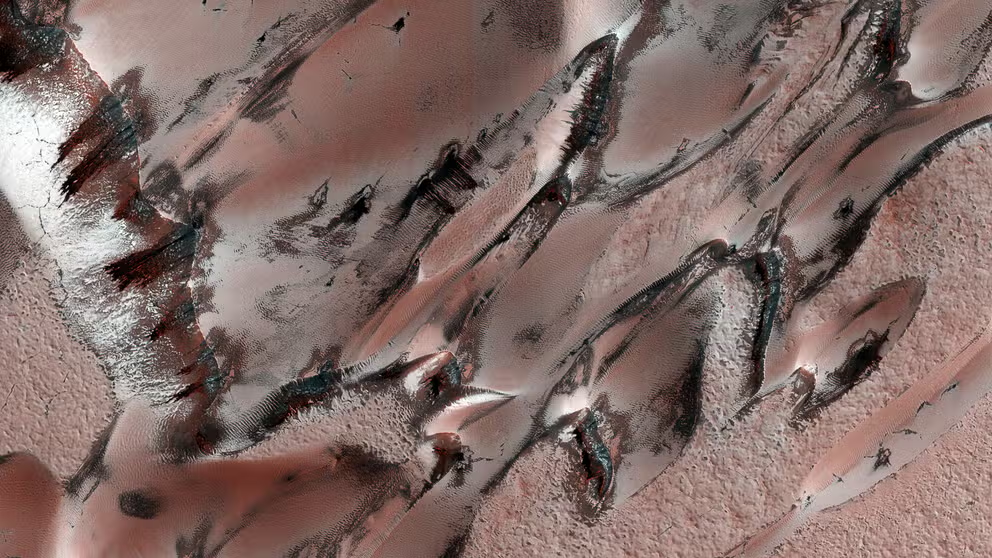See it: 'Stunning' visuals of Martian clouds give first-of-its-kind view of Red Planet
One of the images is a false color composite made by combining three channels of infrared data, according to NASA.
'Wintry' scenes from Mars: How the Red Planet sometimes looks a little white
It's not just Earth that boasts snowfall. Mars gets snow sometimes too, only there, it's frozen carbon dioxide, not water. Peek at some of the "snowy" scenes from our distant planetary neighbor.
On Wednesday, NASA released panoramic images of the horizon on Mars, giving scientists an opportunity to see the Martian landscape below layers of clouds and dust.
"Stitched end to end, the 10 images offer not only a fresh, and stunning, view of Mars, but also one that will help scientists gain new insights into the Martian atmosphere," the agency said.
One of the images is a false color composite made by combining three channels of infrared data, according to NASA. This combination highlights the gauzy layer of water-ice clouds and dust in the atmosphere.
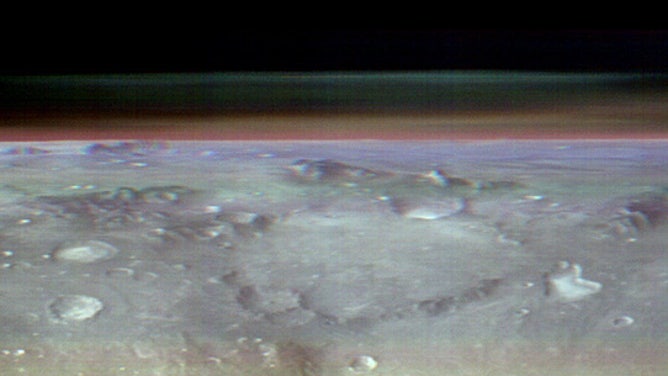
A portion of a false color panoramic image of the Martian surface.
(JPL-Caltech / ASU / NASA)
Some of the other images appear in black and white and feature a number of notable regions of Mars.
MARS ROVER INSTRUMENT MOXIE GENERATES ENOUGH OXYGEN FOR SMALL DOG
For example, the image below is a snippet from a panorama of the Eastern Hellas Basin, which NASA said is an ancient impact basin that, at more than 1,000 miles wide, is the largest one on Mars. Within the basin are craters and other features, along with wisps of clouds.
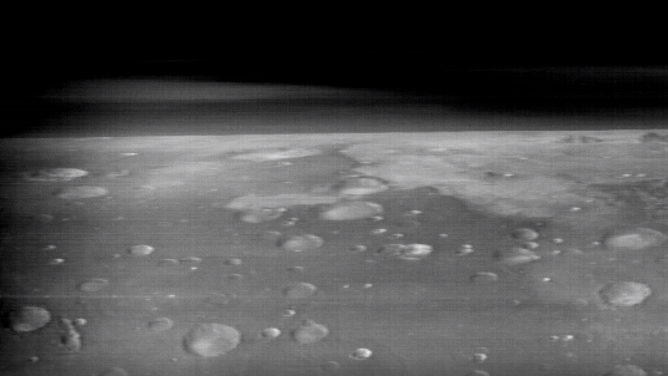
A portion of one of the panoramic images of the Eastern Hellas Basin on Mars.
(JPL-Caltech / ASU / NASA)
In addition to the Martian surface, images of the two moons that orbit Mars. One of those moons, Photos, is shown in the animated series of images below.

A loop of images showing Phobos, one of two moons orbiting Mars.
(JPL-Caltech / ASU / NASA)
The challenges of capturing the images
The view provided by the images is uncommon, largely because of the challenges involved in creating it, according to NASA.
NASA PHOTO MAY SHOW EVIDENCE OF ANCIENT WILD RIVER ON MARS
The images were shot on May 9 by using a camera on the spacecraft 2001 Mars Odyssey orbiter, which circles the Red Planet every two hours. However, the fixed camera only points downward onto the Martian surface.
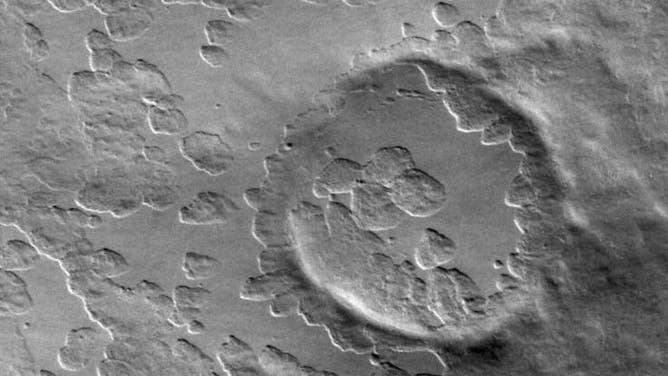
An image captured by Odyssey's camera, Thermal Emission Imaging System, or THEMIS, of smooth material covering the flanks of the volcano Peneus Patera, located south of the Hellas Basin. This image demonstrates the usual top-down angle of the camera.
(NASA / NASA)
To angle the camera in a way to have it capture a side view of the horizon, a team of scientists had to rotate the entire Odyssey orbiter by nearly 90 degrees.
Additionally, they had to make this adjustment while ensuring Odyssey’s solar panels still received sunlight to power them without damaging sensitive equipment.
They were able to find the best approach, but it required that the orbiter’s antenna be pointed away from Earth, leaving the team out of communication with the spacecraft for several hours.
A historic Odyssey mission
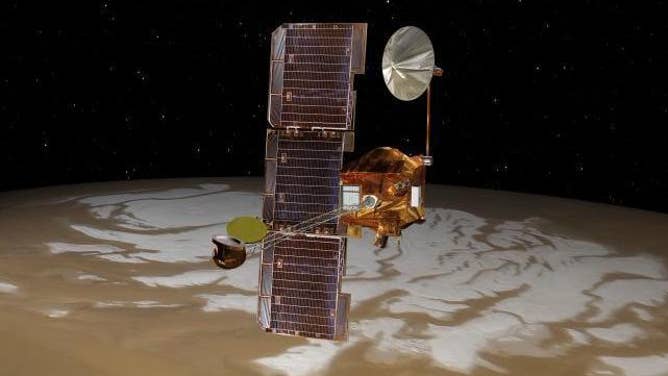
An artist's visualization of the 2001 Mars Odyssey orbiter over the Red Planet.
(NASA / NASA)
Odyssey flies above the Red Planet about 250 miles above its surface, roughly the same altitude as the International Space Station as it orbits Earth.
As of Wednesday, the spacecraft has been orbiting Mars for 22 years, making it the longest-operating NASA spacecraft on Mars.
